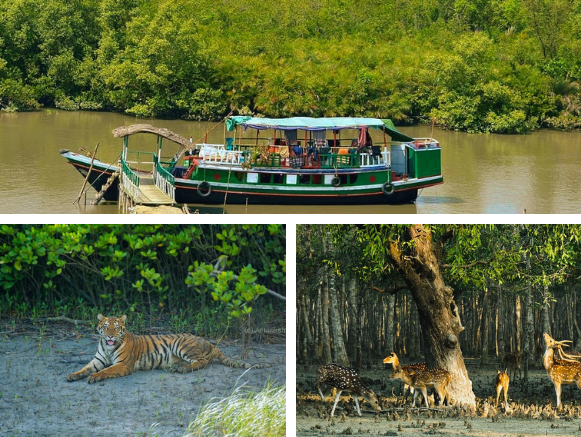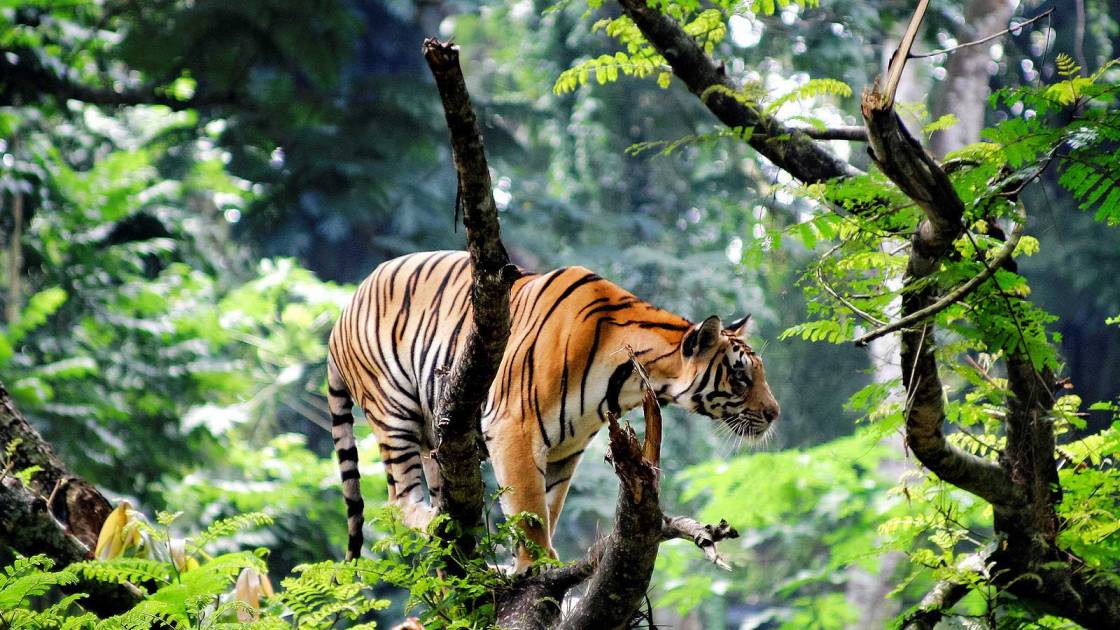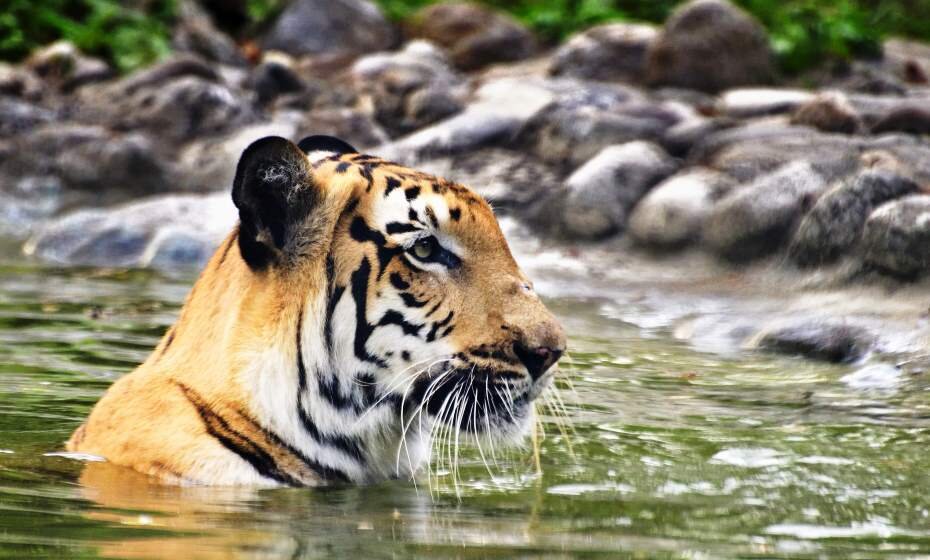Introduction
A Magnificent Mangrove Ecosystem: The Sundarbans, an otherworldly mangrove ecosystem stretching across the delta of the Ganges, Brahmaputra, and Meghna rivers, is a natural wonder that captures the imagination of all who encounter its enigmatic beauty.

With its vast expanse of dense mangrove forests, winding waterways, and diverse wildlife, the Sundarbans holds a unique place in the world’s ecological treasures. In this blog, we will explore the fascinating aspects of the Sundarbans, from its rich biodiversity to the challenges it faces and the efforts made to preserve this irreplaceable natural heritage. We will discuss more about A Magnificent Mangrove Ecosystem.
Geographic Location and Distribution
The Sundarbans is situated in the coastal regions of both Bangladesh and the Indian state of West Bengal. It covers an area of approximately 10,000 square kilometers, making it the largest contiguous mangrove forest in the world. The mangroves in Bangladesh are known as the “Sundarban Reserve Forest,” while those in India are designated as the “Sundarbans National Park.”
Biodiversity and Wildlife
a. Flora:
The Sundarbans is renowned for its diverse array of mangrove species that have adapted to thrive in the unique brackish water environment. The dominant mangrove species include the Sundari (Heritiera fomes), Gewa (Excoecaria agallocha), and the Kankra (Bruguiera gymnorrhiza). These mangroves play a crucial role in stabilizing the coastal ecosystem, protecting the land from erosion and tidal surges.

b. Fauna:
The Sundarbans is a treasure trove of wildlife, providing a home to several unique and endangered species. The iconic Bengal tiger (Panthera tigris tigris) is perhaps the most famous inhabitant of the Sundarbans, known for its swimming abilities and adaptations to the mangrove environment. Other wildlife includes estuarine crocodiles (Crocodylus porosus), spotted deer (Axis axis), wild boars (Sus scrofa), and the elusive fishing cat (Prionailurus viverrinus). The region is also a haven for avian species, with kingfishers, herons, egrets, and the rare masked finfoot (Heliopais personata) among its diverse birdlife.
A UNESCO World Heritage Site
In recognition of its outstanding universal value and significance, the Sundarbans has been designated as a UNESCO World Heritage Site. This prestigious designation highlights the critical role the Sundarbans plays in conserving biodiversity and preserving a unique mangrove ecosystem. We will discuss more about A Magnificent Mangrove Ecosystem.
:max_bytes(150000):strip_icc()/GettyImages-469251347-59e83de6054ad9001115a9ef.jpg)
Unique Adaptations in Wildlife
The Sundarbans is a land of remarkable adaptations, where flora and fauna have evolved to cope with the challenges of the tidal ecosystem. The Bengal tiger, for instance, has developed unique swimming and hunting skills to thrive in the mangrove environment. Estuarine crocodiles have adapted to tolerate varying salinity levels, while the masked finfoot navigates through the dense mangrove roots with ease.
Threats and Conservation Efforts
Despite its ecological importance, the Sundarbans faces several threats that endanger its delicate balance:
a. Climate Change:
Rising sea levels, increased salinity intrusion, and extreme weather events pose significant challenges to the Sundarbans ecosystem.

b. Habitat Loss:
Human encroachment, deforestation, and land conversion for agricultural purposes are detrimental to the mangrove forests and the wildlife that depend on them.
c. Human-Wildlife Conflict:
The coexistence of human settlements and wildlife can lead to conflicts, especially when animals encroach upon human territories.
To counter these threats, conservation efforts are in place on both sides of the border. Governments, NGOs, and local communities are working together to promote sustainable practices, protect wildlife, and raise awareness about the importance of preserving this ecological treasure. We will discuss more about A Magnificent Mangrove Ecosystem.
Conclusion
The Sundarbans is more than just a place of beauty; it is a living testament to the resilience of nature and the intricate dance between land and water. With its unparalleled biodiversity and unique adaptations, this magnificent mangrove ecosystem continues to captivate the hearts and minds of all who venture into its depths. We will discuss more about A Magnificent Mangrove Ecosystem.
As visitors and custodians of our planet’s natural wonders, we bear the responsibility of protecting the Sundarbans and its inhabitants for generations to come.

By supporting conservation efforts, practicing responsible tourism, and promoting sustainable practices, we can ensure that this irreplaceable treasure continues to flourish, reminding us of the inherent value of preserving Earth’s ecological diversity. The Sundarbans stands as a reminder of our interconnectedness with nature and the profound impact we can have in safeguarding the delicate balance of the planet’s ecosystems.We will discuss more about A Magnificent Mangrove Ecosystem.
Book Sundarban tour with RoyalSundarban Tourism:
“Embrace the Call of the Wild with Royal Sundarban Tourism! Our carefully curated tours promise a thrilling adventure through the Sundarbans’ untamed beauty. Glide through emerald waterways, encounter the magnificent Bengal tiger, and marvel at the diversity of birdlife that graces this pristine ecosystem. With our commitment to sustainable travel and local engagement, you’ll not only experience nature at its finest but also contribute to the conservation of this ecological marvel. Book your royal journey now!”
We have Sundarban Tour Packages every day
For Booking Of Best Sundarban Package( Starting from 2799/-)
Name: Dilip MAity
Organization: Royal Sundarban Tourism
Organizations Web link: https://royalsundarbantourism.com/
Contact: +917439965413 / 8584838109
Gpay / Phone pay : 9804049535
Email: info@royalsundarbantourism.com
Address: Tiger More, Gosaba, Pakhiralay, Pakhiralay Main road, District- 24 Parganas South, West Bengal 743370 Also you can Book Sundarban Tour At Maity Tourism Powered By Argusdna,
